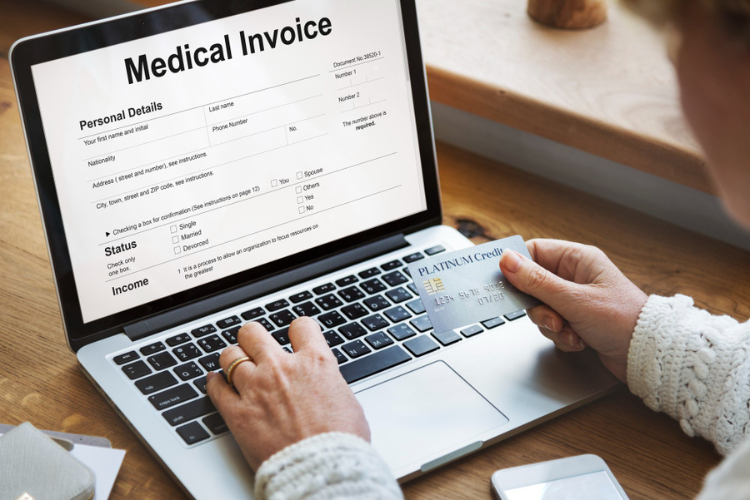Table Of Contents
- Who Pays for Medical Bills After A Car Accident in New York? Medical Bill Responsibilities
- 1. No-Fault Insurance Laws in New York: Who Pays for Medical Bills After A Car Accident in New York?
- 2. The Role of Personal Injury Protection (PIP)
- 3. What Happens When Medical Costs Exceed Coverage Limits?
- 4. Other Factors That Can Impact Who Pays Medical Bills After A Car Accident in New York?
- Medical Bills After A Car Accident: Steps to Take and Different Methods
- 1. A No-Fault Claim
- 2. Pursuing Compensation from the At-Fault Driver
- 3. Health Insurance as Secondary Coverage
- 4. Medical Provider Liens and Payment Plans
- Conclusion
Who Pays for Medical Bills After a Car Accident in New York? Understanding Insurance Responsibilities and Next Steps
Have you wondered who pays for medical bills after a car accident? The medical bills in a car accident can be hefty, hence it is impotant to know things beforehand to be ready in the hours of crisis.
Car insurance is supposed to pay for medical bills regardless of who may have caused it.
This rule is part of New York’s no-fault insurance system, which aims to speed up and simplify the process for people injured in car crashes.
Even when you have no-fault coverage, you can be in situations where the cost might not stop at your own insurance. Hence, if your medical expenses exceed your policy limits, your health insurance can rescue you.
People have several questions about what happens after a crash, from who pays for medical bills after a car accident to filing claims.
You can get clarity on the most commonly asked questions by drivers at 20 Common Car Accident Questions and Answers.
Navigating the aftermath of a car accident is never easy. Knowing how the process works in New York helps people get the care they need and worry less about the cost.
Who Pays for Medical Bills After A Car Accident in New York? Medical Bill Responsibilities
In New York, certain rules decide who pays for medical costs after a car accident.
This varies depending on certain factors
- The type of insurance coverage.
- How much is available?
- The details of the accident all play a part.
Further, let’s find out how the no-fault insurance laws and personal injury protection impact medical bill responsibilities.
1. No-Fault Insurance Laws in New York: Who Pays for Medical Bills After A Car Accident in New York?
Did you know that in New York, no-fault insurance systems are mandatory? Hence, when it comes to who pays for medical bills after a car accident, car insurance must also pay medical bills, regardless of which driver may have caused the accident.
It is mandatory for every registered vehicle in New York to have no-fault coverage. Hence, this is also called Personal Injury Protection.
This means that victims get payment for medical costs quickly. You do not have to wait for lawsuits or blame each other to receive coverage for the care.
This also means that the No-fault rules apply to you if you are a passenger, bicyclist, or pedestrian, depending on the accident.
No-fault insurance covers lost wages, medical bills, and some other reasonable expenses caused by the accident. However, it does not cover damage to the car or pain and suffering.
2. The Role of Personal Injury Protection (PIP)
All car insurance policies issued in New York City must also include Personal Injury Protection, often called PIP.
PIP coverage pays for medical bills after an accident up to the policy limit set when the insurance was purchased.
Your basic PIP policy in New York should cover at least $50,000 per person.
It will pay for things like
- Doctor visits, hospital bills
- Surgery
- Medication and some rehabilitation.
- PIP also covers a portion of lost wages if the injured person is unable to work for a period after the accident.
- Relatives living in the same household are also covered under this policy if they get hurt in a car accident.
- Even if another person drives the insured vehicle with permission, your PIP should also cover it.
You should keep in mind that the PIP only pays for the bills for car injury treatment.
3. What Happens When Medical Costs Exceed Coverage Limits?
Who pays for medical bills after a car accident when the medical costs exceed the limit set by the no-fault PIP policy?
Payment for the remaining bills must come from your other sources. You can have private health insurance or have state health plans.
Even Medicare or Medicaid may qualify at times.
You can be in the situation because of someone else’s fault; in that case, you can take legal steps. You should file a claim against the driver’s insurance in case of serious injuries.
These are “third-party claims.”In such a case, you may have to go through Lawsuits, pain and suffering, or medical bills not covered by the no-fault policy.
You will be billed directly for the amount not covered. Therefore, keeping records of all bills, coverage letters, and any communication with insurance companies is important, as it may be required for reimbursements.
4. Other Factors That Can Impact Who Pays Medical Bills After A Car Accident in New York?
Several things affect who actually pays the medical bills after a car accident. The main factor is the type and amount of insurance each person has. The level of PIP coverage, any extra health insurance, and how the accident happened all play a role.
If you are working during the mishap, you may be eligible for workers’ compensation, which helps pay for medical costs if any pedestrian is involved.
Even if they don’t have their own auto insurance, the car owner’s policy may cover them.
Everything depends on the severity. Minor injuries are often fully covered by PIP.
While serious injuries can lead to lawsuits or claims against you if you are the driver allegedly at fault, your payment can sometimes be split between several forms of insurance, depending on the situation.
Disagreements with your insurance companies about coverage can sometimes delay or affect payment, so you need to get quick answers and understand the terms of each policy.
Medical Bills After A Car Accident: Steps to Take and Different Methods
After a car accident in New York, understanding payment options for medical bills is necessary. Different methods are available to cover these costs:
- Car Insurance
- Lawsuit
- Health Insurance
- Provider Payment Plans
1. A No-Fault Claim
To start, anyone injured in a car accident in New York should file a no-fault claim with their own car insurance company. The driver or passenger should contact their insurer as soon as possible, usually within 30 days of the accident.
Submitting medical bills, records, and the accident report will be part of the process. Personal Injury Protection (PIP) usually pays up to $50,000 for medical expenses, lost wages, and some other related costs, regardless of fault. Keep copies of every document sent to the insurer.
A no-fault claim covers treatment related to the accident, but does not pay for pain and suffering or damage to property. Filing quickly helps prevent delays and keeps the process simple for the injured person.
2. Pursuing Compensation from the At-Fault Driver
If medical bills are higher than the PIP coverage or if the injuries are “serious” under New York law, a person may seek further payment from the other driver who caused the accident. This usually means filing a personal injury lawsuit asking for costs not covered by no-fault insurance.
In court, it is possible to ask for money for pain and suffering, future medical costs, or additional lost wages.
Here, the evidence needed for the lawsuit is:
- Medical documents
- Police reports
- Proof of negligence
The at-fault driver’s liability insurance may pay these damages if the lawsuit is successful.
Strict deadlines called statutes of limitations apply to these lawsuits, so acting quickly helps protect legal rights. Seeking compensation in this way can sometimes take longer than going through insurance.
3. Health Insurance as Secondary Coverage
When PIP is used up, and further medical bills need to be paid, health insurance may step in as secondary coverage.
The patient should let the health insurance company know about the accident and any payments already made through no-fault insurance.
The health insurer may cover approved treatments after the exhaustion of the no-fault limit. Sometimes the health insurer has a right to get reimbursement from any personal injury lawsuit settlement, so keeping records is helpful.
Health insurance may not cover all medical services. Thus, it can leave the injured person responsible for co-pays, deductibles, or uncovered treatments. Checking the policy details helps prepare for remaining costs.
4. Medical Provider Liens and Payment Plans
If a person cannot pay medical bills after their insurance options are used, some medical providers will accept a lien or create a payment plan.
A medical lien is an agreement where the provider waits for payment until after a personal injury lawsuit reaches a settlement and the payment for the insurance claim arrives.
Providers may send bills directly to the lawyer handling the claim, and payment comes from the settlement. Not all providers accept liens, so it is best to ask in advance.
Some places will set up monthly payment plans, splitting up bills into smaller amounts. Talking openly with billing offices as soon as possible can help find manageable solutions. These options can allow for treatment while waiting for the resolution of the financial case.
Conclusion
After a car accident in New York, most medical bills are first paid by no-fault insurance. This covers medical expenses no matter who caused the accident.
If no-fault coverage runs out, health insurance may help pay the rest. Injured people do not need to wait for a lawsuit to get medical care.
It is important for anyone in an accident to promptly report injuries and follow the correct claim steps. This process helps speed up payments and supports quick recovery.
Read More:














